Wetlands are a broad concept that includes several different habitat types, such as bogs, beaches, marshes, and bogs. These environments are vital for many species, not least for our small animals and their eggs and larvae. A high incidence of insects, larvae, and eggs means a lot of food for fish, frogs, birds, and other insects.
NATURE’S SMART WATER PURIFIER
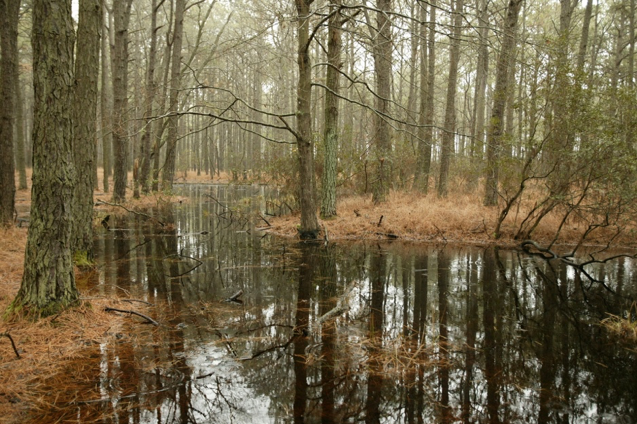
Wetlands absorb water from rain and snow and retain this water in the soil. Floods could occur more efficiently without the wetlands’ ability to bind natural water. We can replenish that groundwater level because of the water-holding function of wetlands, even during drier periods. Water from surrounding areas, such as cities and agriculture, flows in a slow motion through the wetlands. Then, trough slow drainage, contaminants have time to be broken down by bacteria or sink to the bottom. Wetlands thus function as nature’s own treatment plants. You can let wastewater flow through wetlands before and after it comes to a water treatment plant. In this way, there is less work for the treatment plant. When nature performs its job, it will be cheaper for the treatment plant!
To be able to use more land for cultivation and provide conditions for crop production, we have ditched wetlands to divert water and drain cultivation areas for a long time. Even in forestry, people have long dug to divert water and facilitate tree planting. This activity resulted in wetlands disappearing, and a quarter of Sweden’s original wetlands are disappearing. When wetlands disappear, we lose one of nature’s purifying functions, and many species disappear when their homes are lost. Nineteen per cent of Sweden’s red-listed species occur in wetland environments [1].
LOTS OF WATER – LOTS OF MOSQUITOES – LOTS OF BIRDS!
One of the species that thrive in wetland environments is the familiar mosquito. When we talk about mosquitoes, we mean stinging mosquitoes, but most mosquitoes do not sting. In Sweden, we have about 2,500 mosquito species, of which only 49 are mosquitoes. Some species of mosquitoes prefer blood from birds, while another species, the frog mosquito, only seems to suck blood from frogs [3]. But of course, many of them stick to us humans as well. Only the females suck blood. They need proteins to produce eggs and suck blood to get these proteins.
The mosquito is essential as food for other animals. Fish eat mosquitos when they are larvae, and as adults, they are vital food for many birds, spiders, bats, and other animals. Because mosquitoes occur in large numbers, they form a significant part of the food chain in the water bodies where they appear. For example, the larvae of feather mosquitoes can cover the entire bottom and amount to 50,000 per square meter [4]. If the mosquitoes disappeared from the wild, it would be difficult for birds and bats, for example, to find food for their young.
FLY, DIVE AND WALK ON WATER – INSECTS KNOW MANY WAYS TO MOVE AROUND
The tailor is an aquatic insect that many recognize. How can the tailors go on the water? Well, the tailor has legs with water-repellent hair. Like this, the surface tension of the water supports them. They run across the water and chase their prey, often insects falling into it.
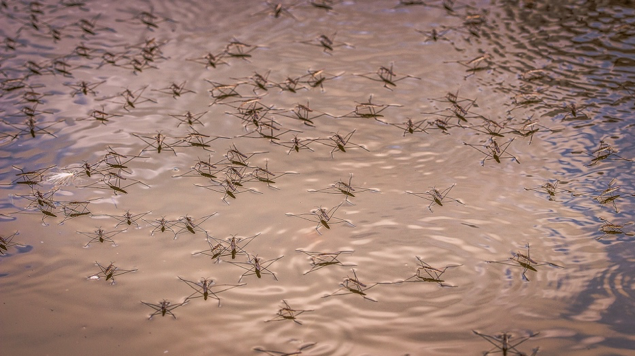
Many beetles are also dependent on water. An example is the swimming diver, an aquatic beetle that retrieves air by holding its hind body above the water’s surface. The beetle’s larvae also live in water and are predators that like to eat insects and fish fry. The diver is a good pilot, which is required for it to be able to get between different watercourses.
DRAGONFLIES – HUNGRY ANCIENT ANIMALS
Indeed, there is something magical about dragonflies. These giants, shiny pilots are among Sweden’s largest and oldest insects [5], often flying across the country in connection with water. If you are eager to see these beautiful giant insects, go out and look in areas with shallower water. The dragonflies lay their eggs there, and they hatch and live like larvae.
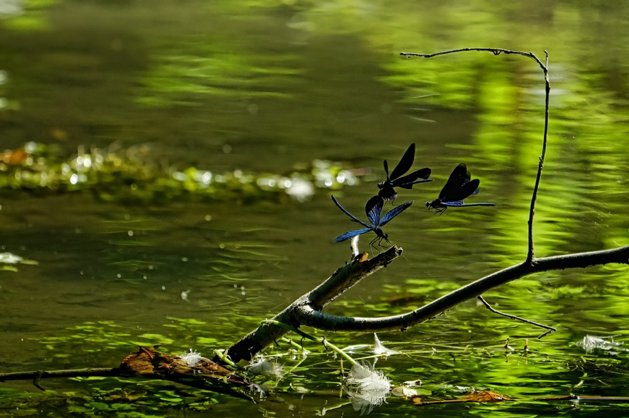
The period as an adult dragonfly is short, from a few weeks to only of a few months, depending on the species. The larvae, however, can live up to several years. The larvae are voracious predators, often waiting until prey comes by. Then they attack with lightning speed by throwing out their reshaped elongated lower lip, which can bend flexibly in different directions. The dragonfly larva is so greedy, so if you put it in a jar together with other small insects, you will soon only have the dragonfly larva left.
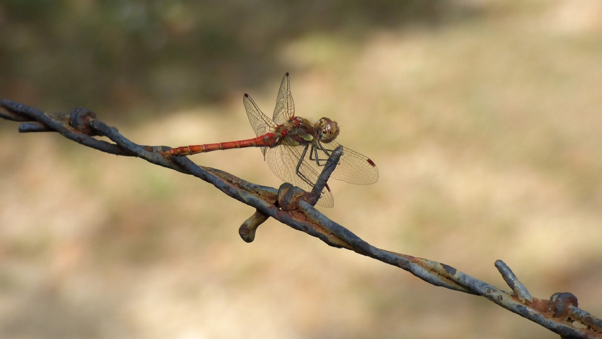
In Sweden, they have found 64 species of dragonflies. Dragonflies are easy to identify and are therefore often used as an indicator to measure how the environment is. A watercourse with many dragonflies indicates good water quality. If you’re lucky, you can still see a dragonfly this November. Only a few species fly as late, but one species found as late as 24 November is the giant meadow dragonfly [6].
THE MAYFLY ONLY GETS A FEW HOURS FLIGHT
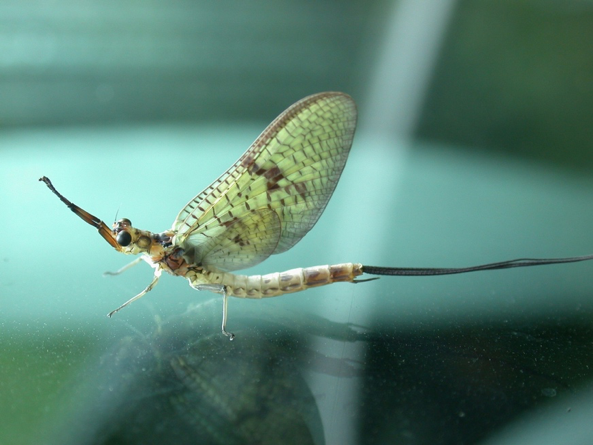
Here we see a representative of another group of dragonflies; the mayfly. The insect group class that mayflies belong to includes the oldest insects we know of, and just like dragonflies, they usually live in shallower water. It is a myth that mayflies only live one day. The Swedish word is “dagslända” and means one day landed. This name alludes to the dragonfly’s short time as an adult, but as larvae, they actually live for a year or more in water. However, the fully grown adult dragonflies only live until they have mated and laid eggs and do not need to eat! And this does not take long. The lifespan of an adult dragonfly varies, depending on the species, between a few hours to a few days. Several dragonflies are sensitive to polluted water, and dragonflies belong to the group of small aquatic animals that are declining globally.
WHAT CAN YOU DO FOR THE AQUATIC SMALL ANIMALS?
· Many of our small aquatic animals are endangered. Solving the problems requires large-scale efforts at national and international levels, but you, as a private person, can also be involved and create change. The Swedish Society for Nature Conservation’s project “Viva Water” gives you inspiration, ideas and concrete suggestions for measures you can implement in your local aquatic environment to improve the living conditions for marine animals and plants. Read more at https://www.naturskyddsforeningen.se/viva-vatten
· Think about what you flush down the drain! Contribute to a non-toxic environment by choosing eco-labelled hygiene and cleaning products.
Sources
- Naturvardsverket.se – how is the environment doing – water – wetland

- Pub.epsilon.slu.se – Red-listed specimens in Sweden 2015

- Sverigesradio.se – The mosquitos are christened!

- Naturskyddsforeningen.se – Larvae’s – The eating machine

- Artdatabanken.se- fauna-watch and dragonflies

- Trollslandeforeningen.se – Greater dragonfly

- Theguardian.com – Insect declines: new alarm over mayfly is ‘tip of iceberg’, warn experts




